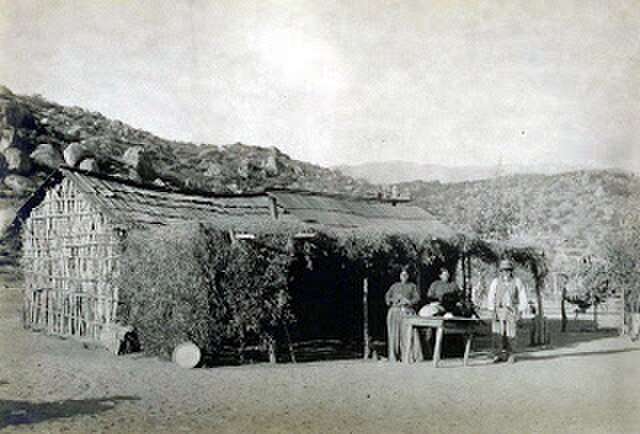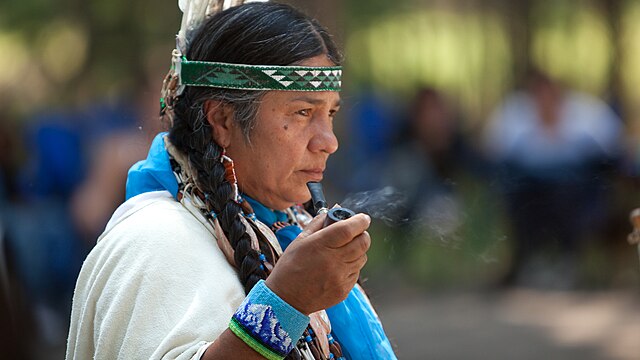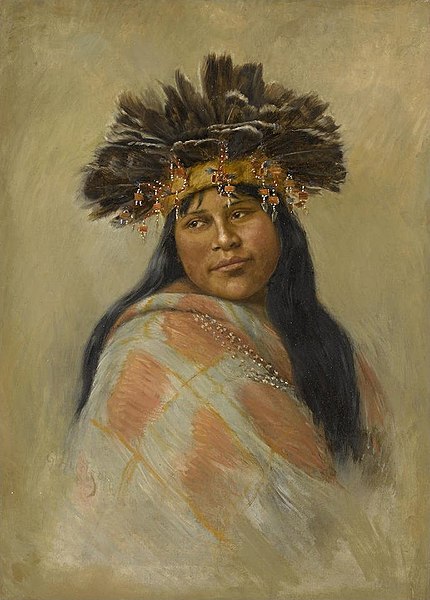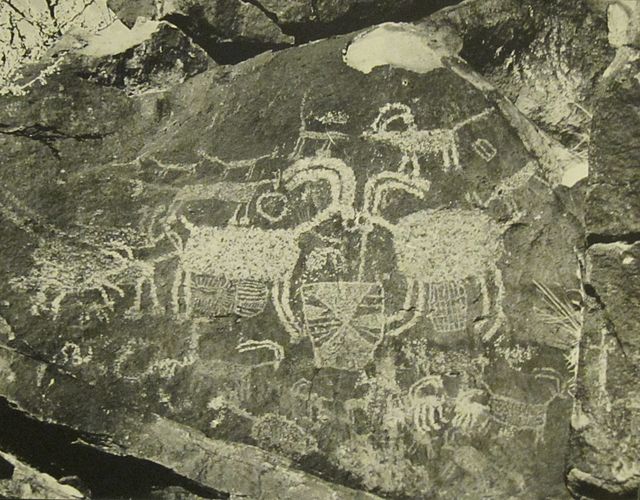The Luiseño or Payómkawichum are an Indigenous people of California who, at the time of the first contacts with the Spanish in the 16th century, inhabited the coastal area of southern California, ranging 50 miles (80 km) from the present-day southern part of Los Angeles County to the northern part of San Diego County, and inland 30 miles (48 km). In the Luiseño language, the people call themselves Payómkawichum, meaning "People of the West." After the establishment of Mission San Luis Rey de Francia, "the Payómkawichum began to be called San Luiseños, and later, just Luiseños by Spanish missionaries due to their proximity to this San Luis Rey mission.
Drawing of Luiseño men in traditional dance regalia, by Pablo Tac (Luiseño, 1822–1844)
Luiseño basket maker outside of her home
Luiseño home in 1900 in the Temescal valley
Group of Luiseño men at Pala
Indigenous peoples of California
Indigenous peoples of California, commonly known as Indigenous Californians or Native Californians, are a diverse group of nations and peoples that are indigenous to the geographic area within the current boundaries of California before and after European colonization. There are currently 109 federally recognized tribes in the state and over forty self-identified tribes or tribal bands that have applied for federal recognition. California has the second-largest Native American population in the United States.
Winnemem Wintu chief Caleen Sisk in 2009
A Pomo dancer by Grace Hudson
The Coso Rock Art District in the Mojave desert contains about 100,000 petroglyphs.
A reconstruction of a traditional Yurok plank house.








